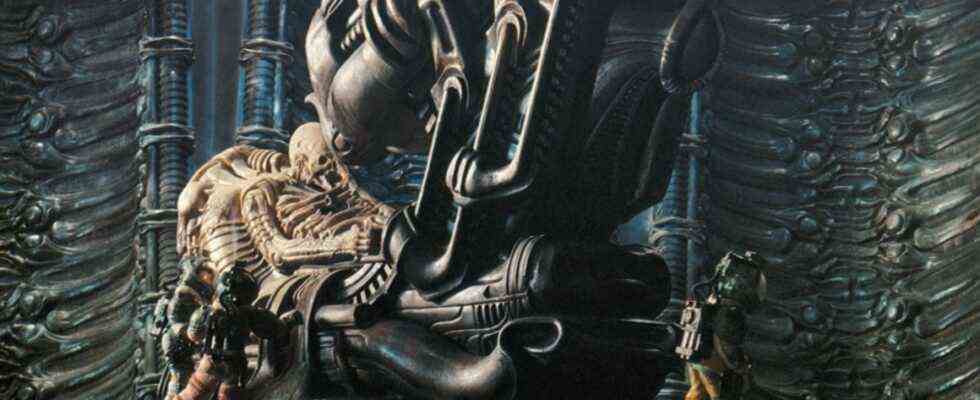A picture is worth a thousand words. The nice thing about the medium of documentary film is that it can show what it means – and in the case of “Memory” this is great in two ways: First, this film about the making of “Alien” allows you to see key scenes again at the same time Ridley Scott’s science fiction classic from 1979. And secondly, the participants and a whole series of film scholars tell in unusual clarity what is slumbering under the surface of “Alien” – apart from the alien monster baby that is in the belly of John Hurt waiting for his big entrance.
Like “Alien”, “Memory: The Origins of Alien” is fed by many sources: from contributions from people of the most varied of trades, from history, art, and cinema. Director Alexandre O. Philippe and producer Kerry Deignan approach the matter in a refreshingly unacademic way. The “Chestburster Scene”, for example, is a central moment – that is the scene when the crew of the spaceship Nostromo get together for dinner, a lively round. John Hurt plays Kane, whose head was just clung to by an alien creature, but now everything seems to be fine with him until he suddenly coughs and grabs his chest. Then an alien breaks out of him. The scene in itself is about as shocking and legendary as the shower stabbing in Hitchcock’s “Psycho” – which was about Alexandre O. Philippe’s previous film. How this scene relates to outbreaks of violence in Stanley Kubrick’s films is shown on the split screen, where he juxtaposes the corresponding moments from “A Clockwork Orange” and “Barry Lyndon”, the moments in which the apparently ordered world collapses. And how Francis Bacon’s paintings shaped the images in “Alien” can also best be seen in the visual juxtaposition.
The alien is considered a creature of Ridley Scott and HR Giger. But what about screenwriter Dan O’Bannon?
“Alien” is full of references, from Hieronymus Bosch, who inspired the alien designer HR Giger, to the comics of the post-war period. The biography of Dan O’Bannon, one of the two screenwriters and the one who wrote the original version, is a treasure trove of historical references, starting with the locust fear of a boy who grew up on a farm in the Midwest – and who later knew very well that his love of comics had something to do with aliens, with the raw, diffuse horror of an impending nuclear war. O’Bannon is no longer alive, but his widow Diane can bring back memories of the time when the script was still draft and it didn’t look like it would ever be made into a film. That is actually interesting in terms of film history, because “Alien” is considered to be a creature of Ridley Scott and the artist HR Giger, O’Bannon’s preparatory work is reevaluated here.
When the project finally took shape, the studio didn’t want Giger – O’Bannon paid for their first designs out of pocket because he couldn’t imagine it would work without him – and the viewer can no longer do that either. “Alien” has become an integral part of science fiction – the visionaries of the sixties had imagined the future to be shiny, clean and bright. “Alien” also thinks the profit orientation, the Nostromo is a commercial ship that is used and looks functional, that is dark and in which an alien monster is up to mischief.
Alexandre O. Philippe works out a whole series of ideas very clearly: The fact that “Alien” has sexual connotations and you see male rape if Kane is attacked at the beginning and fertilized in the broadest sense, gets another dimension when Philippe it is embedded in the fears of emancipation in the cinema of the seventies. Rising divorce rates are much more tangible than the murmuring of the phallic shape of the little monster. “Memory” is an anatomy of horror, put into one handy package. However, if you dissect horror, it loses much of its horror – what is particularly threatening is what you don’t understand.
Memory: The Origins of Alien, on VoD, also released on DVD and Blue Ray by Atlas Film

